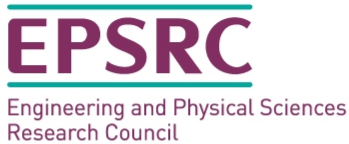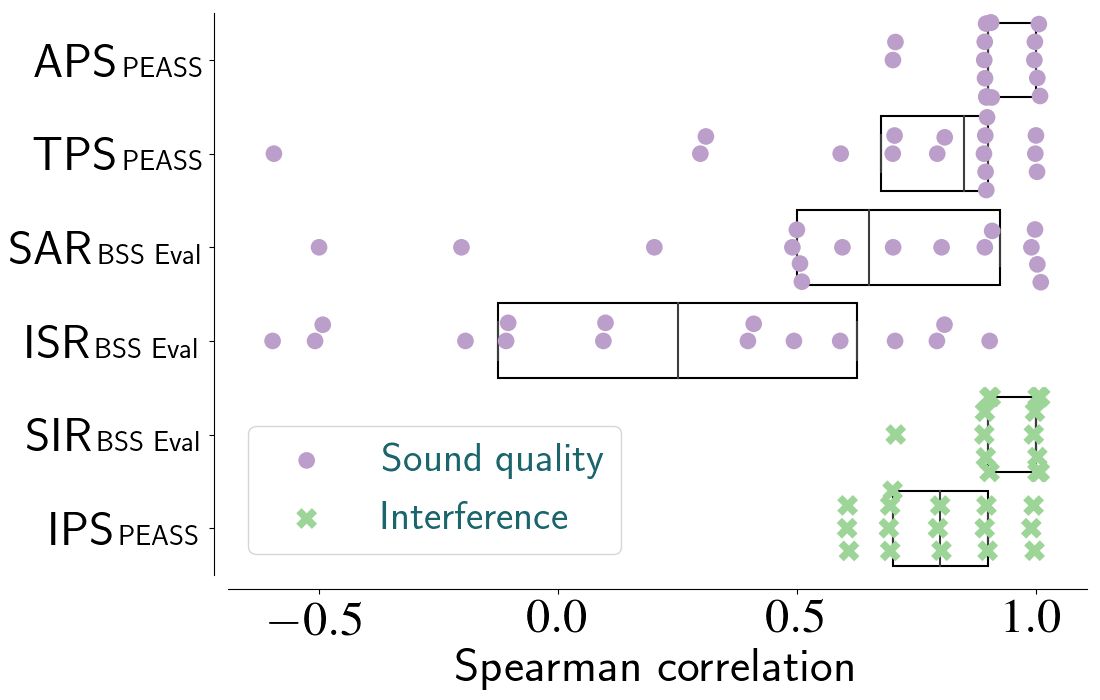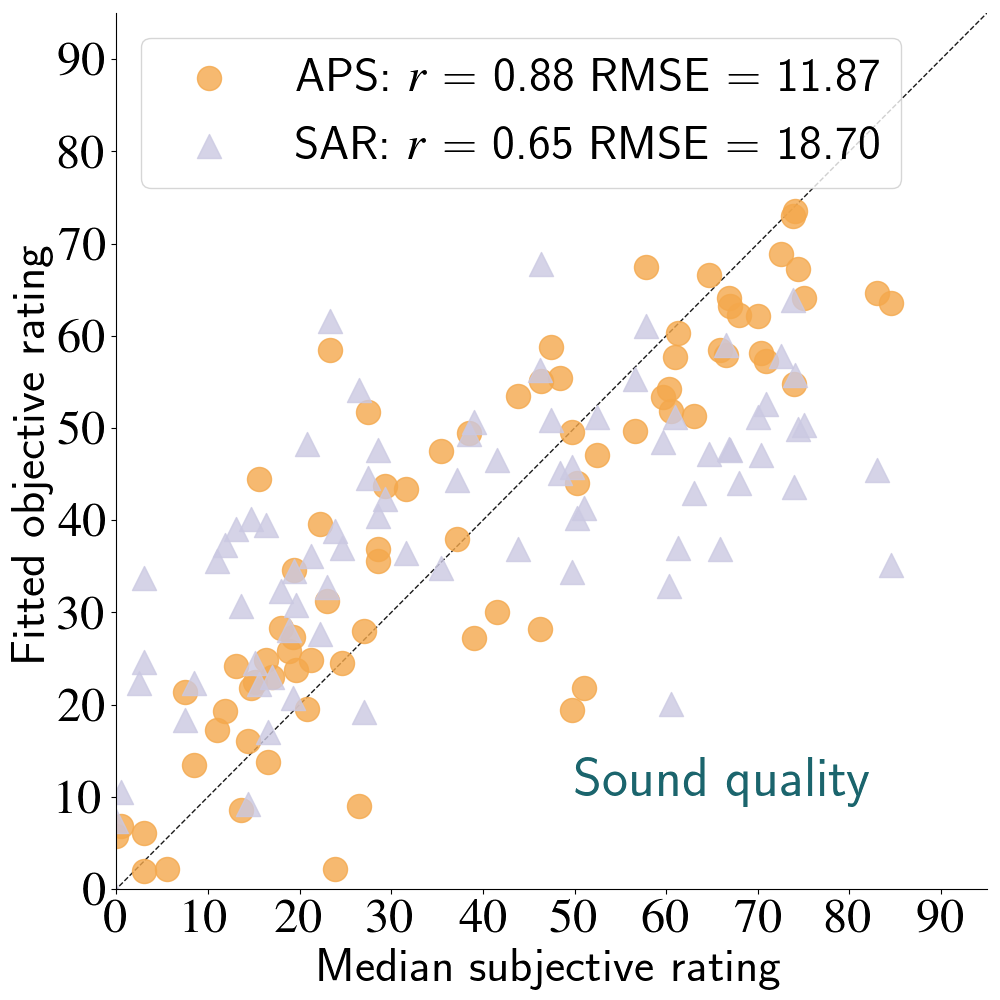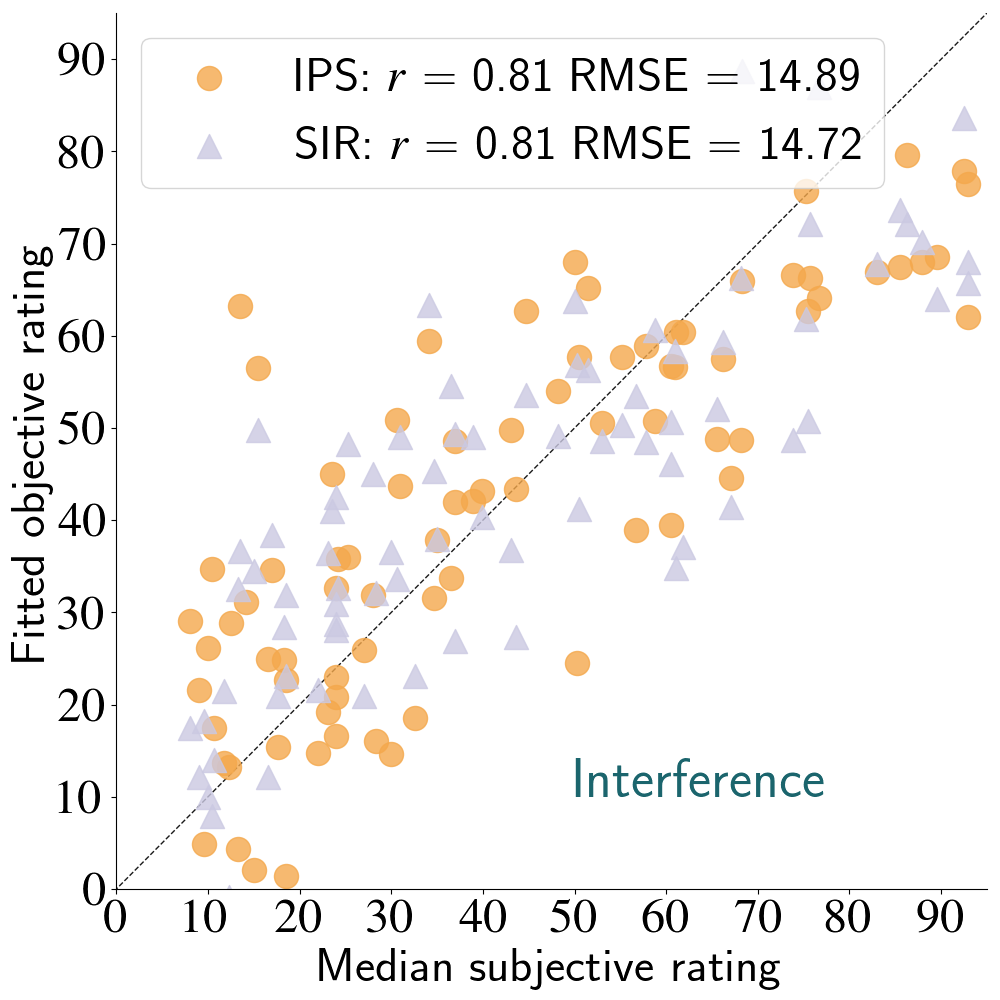BSS EVAL OR PEASS? PREDICTING THE PERCEPTION OF SINGING-VOICE SEPARATION
Dominic Ward, Hagen Wierstorf, Russell D. Mason, Emad M. Grais, Mark D. Plumbley
Centre for Vision, Speech and Signal Processing | Institute of Sound Recording | University of Surrey, Guildford, UK
Audio Examples { bit.ly/2GutUKR }


Objective Evaluation of Audio Source Separation
-
Separating the singing-voice from music is a difficult task, however, deep-learning methods show significant improvements over traditional techniques such as NMF and ICA
-
Source separation introduces distortions and artifacts, which degrades the perceived sound quality
-
There is a trade-off between the degree of separation and sound quality
How to evaluate separation performance?
Few researchers conduct listening assessments, but instead resort to objective toolkits:
- BSS Eval1: Blind Source Separation Evaluation
- PEASS2: Perceptual Evaluation methods for Audio Source Separation
Both approaches based on distortion decomposition between estimated source and target source :
Error components estimated through least-squares projections of estimated and true sources

- Vincent et al. (2006) { 10.1109/tsa.2005.858005 }
- Emiya et al. (2012) { 10.1109/tasl.2011.2109381 }
Subjective Listening Assessment
Can these toolkits be used to predict the perception of singing-voices extracted by modern source separation systems?
-
Need more evidence to address suitability of BSS Eval
-
Few studies have investigated generalization of PEASS
Methodology
Task 1: Sound Quality
Sound quality relates to the amount of artifacts or distortions that you can perceive. These can be heard as tone-like additions, abrupt changes in loudness, or missing parts of the audio.
Task 2: Interference
Interference describes the loudness of the instruments compared to the loudness of the vocals. For example, ‘strong interference’ indicates a strong contribution from other instruments, whereas ‘no interference’ means that you can only hear the vocals. Interference does not include artifacts or distortions that you may perceive.
- 24 Listeners performed a MUSHRA-style experiment
- 16 songs, using singing-voice as the target source
- Listeners compared 5 algorithms selected pseudorandomly from 21 systems for each song 3
- Hidden reference and hidden sound quality and interference anchors included
 Interface for Task 1. Examples at { bit.ly/2GutUKR }
Interface for Task 1. Examples at { bit.ly/2GutUKR }
- SiSEC 2016 { http://sisec17.audiolabs-erlangen.de }
Results
Song-Wise Spearman Correlations
- Measures rank-order relationship between objective measures and medians of subjective ratings
- Performed on a per-song basis involving 5 algorithms
- 16 song-wise correlations per metric

Linear-Fitted Objective Measures vs Subjective Medians


Conclusions and Reflections
- Important to reinforce attribute definitions with audio examples
- APS of the PEASS toolkit showed the strongest predictive ability
- IPS (PEASS) and SIR (BSS Eval) were comparable in performance
- Metrics far from perfect (large RMSE) when considering the 100-point scale
- Remapping of features necessary to better predict the perceptual scales used here
- Need to assess metrics on other sources
- Next time, emphasize overall sound quality as some listeners focused only on the singing-voice
- We are currently running similarity experiments for assessing SDR and OPS